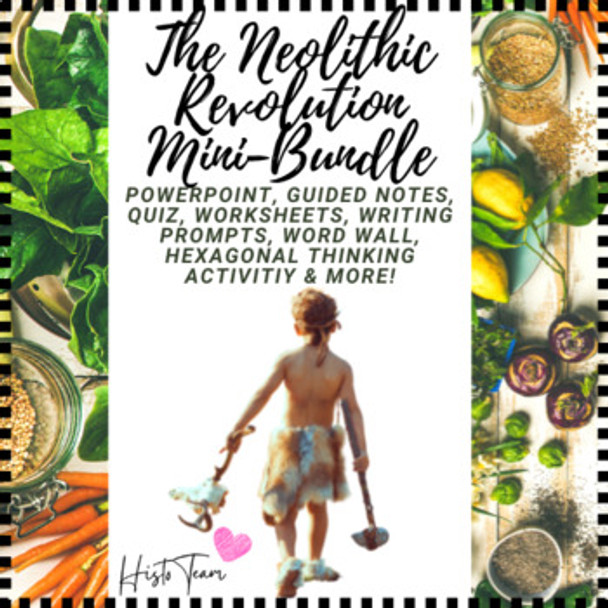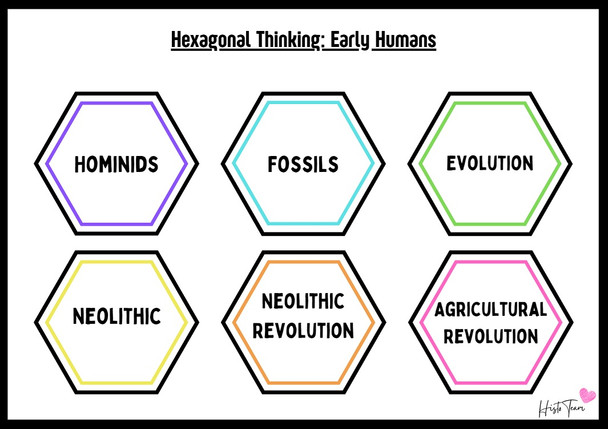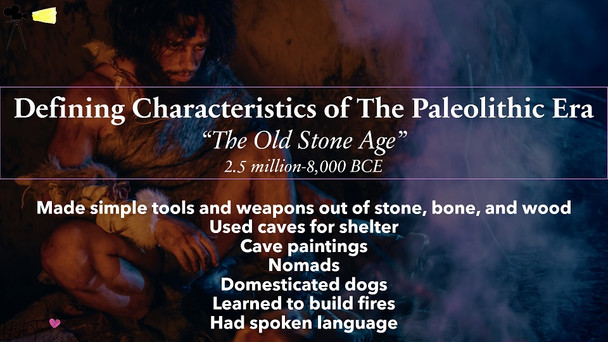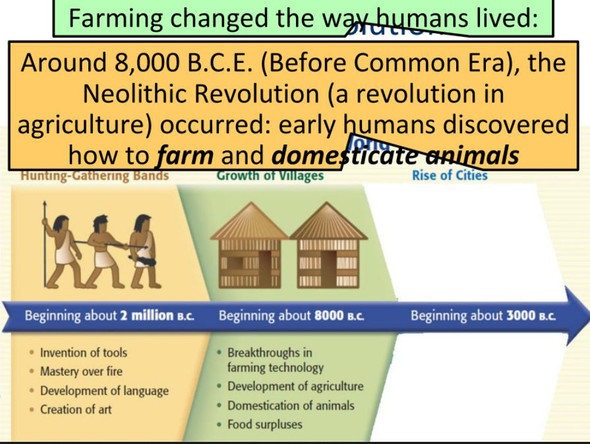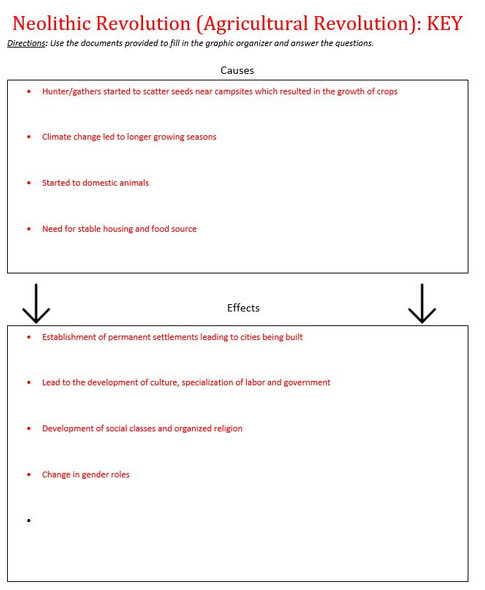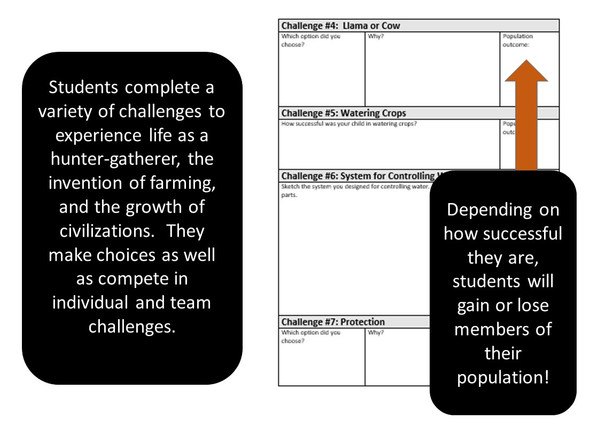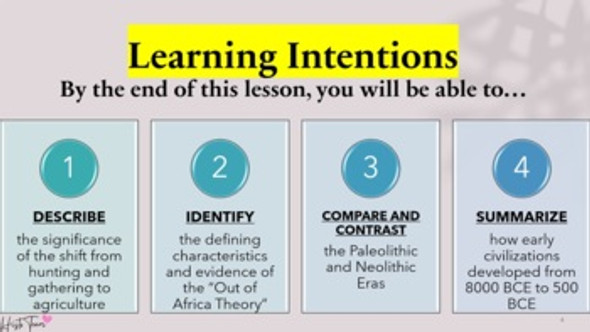Description
This Bundle Includes the World History Neolithic Revolution PowerPoint, Word Wall Set, Hexagonal Thinking Activity, SPICET Charts, and Early Humans Resource Bundle (Guided notes, quiz, compare and contrast, writing prompts, and more) Together For A Discounted Price!
SEE THE PREVIEW VIDEO FOR SAMPLES
____________________________________________________________
Word Wall:
Utilize this word wall set (18 terms) to display to give your students visual cues and reminders of some of the important terms from this unit. Definitions are not included in the word wall set.
Vocabulary terms include: Nomad, Hunter-gatherers, agricultural revolution, ice age, artifacts, and more!
____________________________________________________________
PowerPoint:
World History: Early Humans, Paleolithic Era, Pre-History, Neolithic and Agricultural Revolution PowerPoint
This 48-slide PowerPoint Includes:
- Learning intentions
- An essential question
- Unit vocabulary
- The "Out of Africa" Theory
- Mary Leakey
- "Lucy"
- Defining characteristics of the Paleolithic Era
- The end if the ice age
- Causes of the Agricultural/Neolithic Revolution
- Defining characteristics of the Neolithic Era
- The Neolithic Ice Man
- Venn Diagram cooperative learning activity comparing the Paleolithic and Neolithic Eras (answers are included in PPT)
- Pop quiz reviewing content from this lesson
- Several discussion prompts
Please Note:
- PowerPoint needs to have the content enabled before presenting
- Videos are included in the PowerPoint--> LOOK FOR THE VIDEO CAMERA ICON & CLICK!
- The Roboto, and Avenir Next LT Pro are the primary fonts used in this presentation. You may need to adjust the font/size if you do not have a version of PowerPoint that includes these fonts
=======================================================================
Resource Set:
This 21-page Neolithic and Early Humans Resource Set For World History Classes Includes:
- Cornell style notes
- Venn diagram (compare Paleolithic and Neolithic Eras)
- World Map (for "Out of Africa" theory
- Analyze artifacts from pre-historic eras
- Compare/Contrast project for Paleolithic and Neolithic Eras
- Causes and effects chart for Neolithic Revolution
- 6 Writing prompts
- 1 Quiz (10 questions + extra credit) w/key
_______________________________________________________________
Hexagonal Thinking - World History Early Humans and the Neolithic Revolution: 60 hexagons and important terms/people
Note to Teacher:
Hexagonal thinking is a method of learning for considering the connections between ideas and finding the nuances in those connections. Each student, group, or class can make unique shapes, and connections using this hexagon cards. This is a fun and creative way to review for a test and to get your students to work together as a team.
DIRECTIONS:
Before class, cut out all hexagons. (I also recommend printing them on cardstock and laminating the sheets, before cutting them out.) You can do this activity in small groups, or make it an activity for the entire class if you have a large floor space to utilize. Pass out the Hexagons to students, except for one piece that you will keep. Put down your piece first and have your students build off of it. Each hexagon can connect to up to six others. Students should Arrange and rearrange until they feel they have the strongest hexagon web in place that they can and all hexagon cards have been used. Students cannot place a hexagon down if they cannot explain the connection to each of the surrounding hexagons that it will touch.
S.P.I.C.E.T. Charts

